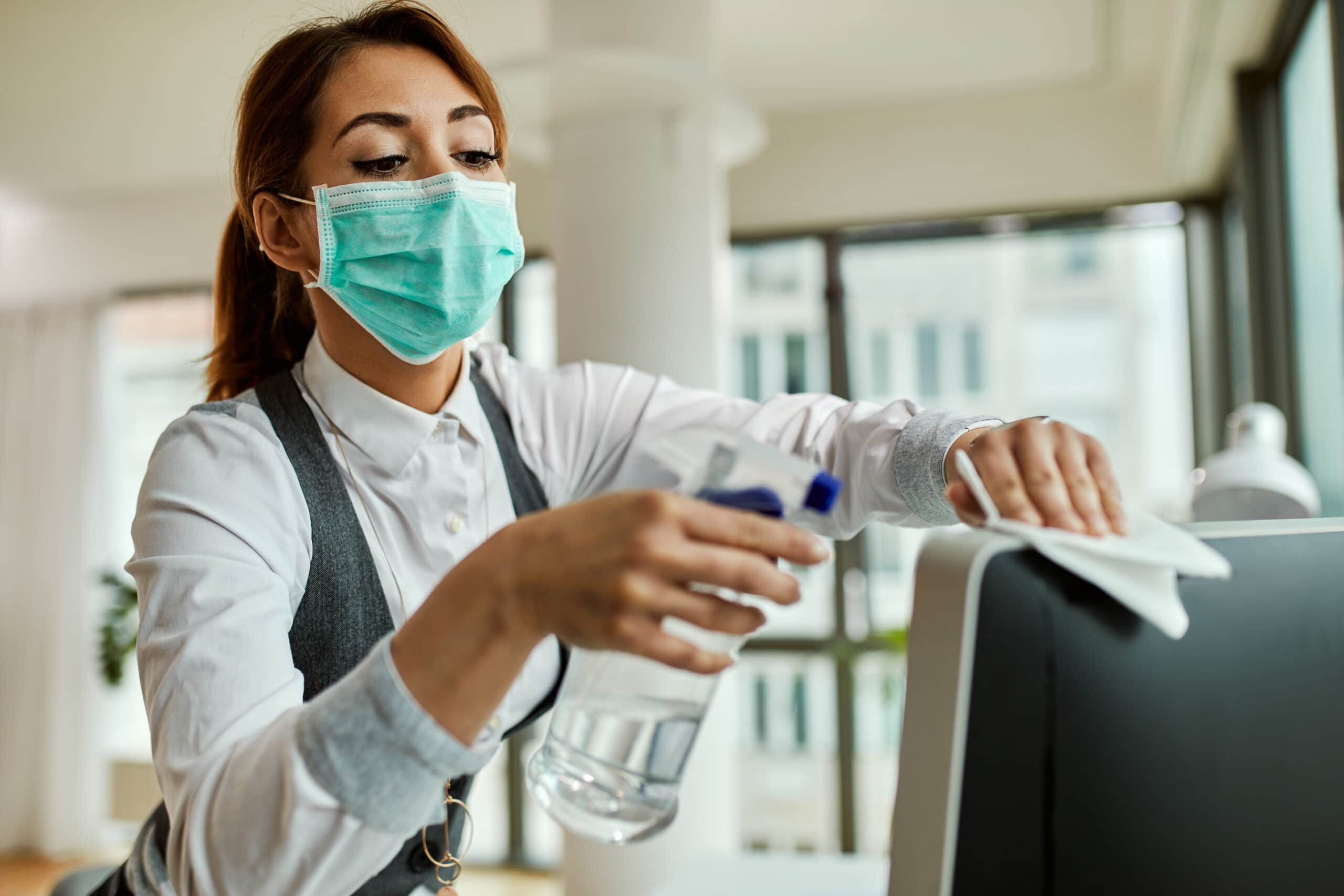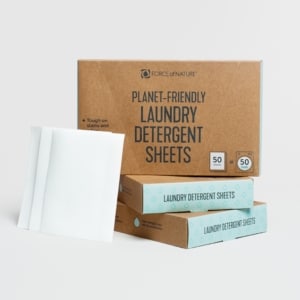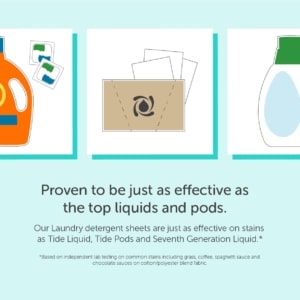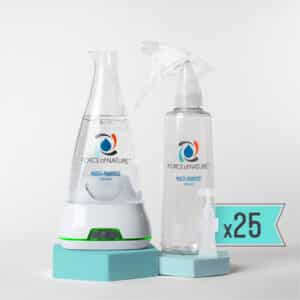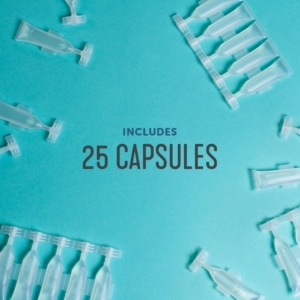As a business owner, keeping your staff safe from germs is critical to (most importantly) their wellbeing, but also to your profitability. Workers who come to work injured, sick, or struggling with mental illness cost US employers billions of dollars a year (pain conditions alone cost US employers nearly $47 billion according to one Journal of American Medicine Article). It’s understandable, especially during a pandemic, that we would increase our cleaning and disinfecting activity and use the most effective products that we can find. Unfortunately, the most common cleaning products often contain ingredients that are toxic to humans and, because the industry is poorly regulated, many of them have not been tested for safety. Additionally, most people do not know how to properly handle disinfectants, and without the proper precautions like ensuring adequate ventilation and wearing protective gear, these products pose serious health risks to our employees. These health risks include exacerbating asthma and allergies, causing skin rashes and burns, and even being as damaging to our lungs as smoking a pack of cigarettes every day. Seeking out less toxic ways to effectively clean and disinfect should be a cause of immediate concern to business owners. Here’s what you need to know about the risks of exposure to common cleaning product chemicals for your employees — and how we can help you disinfect effectively without exposing anyone to harmful chemicals!
What You Need To Know About Employee Exposure To Toxic Cleaning Chemicals
Why and how do cleaning product chemicals pose a risk to employees? Here are the important factors to consider and how you can take steps to protect your team.
1. Know When to Clean, Sanitize & Disinfect
Because manufacturers don’t have to prove the chemicals they are using are safe, the responsibility falls to consumers and business owners to protect themselves by educating themselves on the risk these chemicals pose to our health. It’s also important to understand when a disinfectant product is needed, and when it’s better to clean or sanitize instead. Here’s how to know the difference between these three terms, as well as some tips on when to do each.
- Cleaning products remove soil, dirt, and residue through wiping, scrubbing, or mopping a surface. Cleaning should be done before disinfecting to allow a disinfectant to come into contact with 100% of the surface. You want to clean away visible soil or residue so that the disinfectant can thoroughly saturate every inch of the surface.
- Sanitizing products reduce germs from surfaces to meet public health standards, which vary widely from place to place. Sanitizing does not eliminate 99.9% of bacteria and viruses, it just reduces them.
- Disinfectant products eliminate, destroy, and inactivate at least 99.9% of the microorganisms that cause infections and spread disease and are regulated by the EPA.
The Environmental Protection Agency (EPA) registers disinfectant products as antimicrobial pesticides. This means that for a product to call itself a disinfectant, it must prove it can kill at minimum 99.9% of a specified set of viruses and bacteria. Just remember: using a product that says “green” or “natural” does not mean it’s necessarily safer – these are marketing terms that are not governed by the FDA and many of these products still contain harsh and toxic chemicals.
2. Know Which Ingredients To Avoid
Researching labels by ingredient is an exhaustive effort, so taking advantage of resources like the Environmental Working Group Database (which rates products for safety) and toxic chemical-free alternatives like our 3-in-1 cleaning system and EPA-registered disinfectant, Force of Nature, can reduce the burden to business owners when it comes to protecting their employees from risk. It is a good idea to be aware of some of the most hazardous chemicals to your employee’s health, some of which include:
Sodium Hypochlorite (Bleach): is a serious chemical that is caustic to the soft tissues in our bodies, particularly our airways. It also loses efficacy over time, so it is not as shelf-stable as people may think. Read our full post on the scary truth about bleach here. Due to its danger to respiratory systems, the CDC recommends avoiding bleach if the product is to be used around anyone with asthma or allergies (which is about 30% of US adults and 40% of US children!).
Quaternary Ammonium Compounds (Quats): are a class of antimicrobial compounds that are commonly found in disinfectant products. Quats can disrupt key cellular processes and have been linked to a broad range of health issues including reproductive and developmental problems in animals and exacerbating and causing asthma and allergies in people. It can be hard to find quats on a label, but ingredient names that end in “ammonium chloride,” or are labeled “antibacterial” or “antimicrobial,” most likely contain quats. Like bleach, the CDC recommends avoiding quats if the products will be used around people with asthma or allergies.
Ammonium Hydroxide (Ammonia Water, Liquid Ammonia): used often in drain openers and oven cleaners, toilet cleaners, and other household cleaners, this chemical can cause severe skin burns and eye damage, and respiratory irritation.
Fragrance: Fragrance is an unregulated term that allows manufacturers to avoid disclosing ingredients. Fragrances, even natural ones, are linked to serious respiratory symptoms including allergies and asthma.
Phthalates: Phthalates go hand in hand with fragrance as they help fragrances last. They’re also endocrine-disrupting chemicals that can cause serious health effects like hormone disruption, birth defects and developmental delays, and negative impacts on the immune system.
Triclosan: Triclosan is a commonly used antimicrobial agent that is correlated with scary health effects like endocrine disruption.
Alcohol: Alcohol is drying to your skin and respiratory system and can cause skin and eye irritation, especially in babies and children. It’s also correlated to an increase in poisonings and eye injury in children under 12.
3. Ensure Adequate Ventilation
Mists and vapors from cleaning chemicals can be absorbed through our skin and respiratory systems to irritate our eyes, nose, throat, and lungs as well as trigger breathing difficulties, allergic reactions, and asthma attacks. Employees should be trained to always keep the room well-ventilated when they are using a disinfectant or cleaning product, to avoid irritation, burns, and trigger immunological conditions.
4. Wear Protective Gear
Cleaning chemicals can be corrosive and cause irritation and burns to the skin through mild contact, as well as severe burns if splashed directly onto the skin or eyes. Employees must have adequate protective gear like gloves, masks, and eye protection, and even goggles or respirators if indicated on the packaging, to use when cleaning with conventional disinfectant products.
The active ingredient in Force of Nature, hypochlorous acid (HOCl), is the same substance that is created by our immune systems to fight infection. Our revolutionary device creates HOCl by using electricity to convert tap water, plus a capsule of salt, vinegar, and water, into an all-in-one cleaning, deodorizing and disinfecting olution that is free from skin and respiratory irritants. It is commonly used in ophthalmology, veterinary medicine, wound care, and even dermatologists given it’s gentleness and efficacy in killing germs.
5. Thoroughly Wash Your Hands (And Surfaces) After Cleaning
Just because a product is deemed effective to disinfect surfaces does not mean that it is safe to come into contact with your employee’s skin. Employees should always wash their hands thoroughly after cleaning and disinfecting to remove any residual chemicals from their skin, where they can be absorbed. It’s important to read the manufacturer’s instructions on the label to determine if the surfaces they have cleaned should also be rinsed after disinfecting, as many dangerous chemicals, like quaternary ammonium compounds (quats), can linger on surfaces for extended periods after they are disinfected.
Force of Nature is an EPA registered disinfectant that kills 99.9% of viruses and bacteria. It’s EPA registered for disinfecting hospitals, ICUs, schools, daycares, restaurants, hotels, gyms and more. It’s also EPA approved for use against SARS-CoV-2, the cause of Covid-19 and is on EPA’s List N.
6. Store Chemicals Safely – And Never Mix Them!
Cleaning chemical poisonings and injuries are all too common. All cleaning products should be stored safely according to the manufacturer’s instructions and out of reach of children and animals. Never mix or dilute cleaning products unless following the manufacturer’s instructions as certain combinations – like bleach and ammonia – can cause a vapor that can cause severe lung damage and death. Even if indicated by the manufacturer, ensure any DIY or mixed products are clearly labeled and stored safely to avoid injury.
A Better Way To Disinfect
We know the health and wellbeing of your employees are important to you, and you don’t have to choose between keeping them protected and effectively cleaning and disinfecting your business. We created Force of Nature because we knew there had to be a way to provide a gentle, yet highly effective cleaning, sanitizing, and disinfecting product for consumers and businesses. Our 3-in-1 cleaning system and EPA-registered disinfectant can be made on-demand, right at your facility, so you never have to worry about disinfectant shortages again. Learn more about Force of Nature, our EPA-registered disinfectant, and how your employees can use it in all kinds of applications at your facility, without exposing themselves to harmful chemicals. Want to buy in bulk, or need to make enough of our formula for several bottles a day? We’ve got you covered on that too with Force of Nature Pro, our large capacity appliance that makes 32 or 64 oz of all-in-one cleaner, deodorizer and disinfectant.
